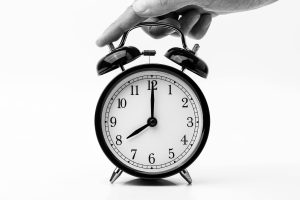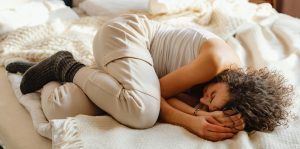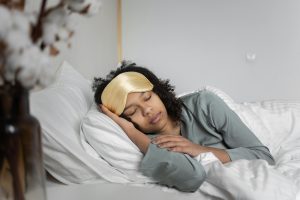Wearable devices have become a popular tool for tracking our health and fitness, and sleep tracking is no exception. With the rise of smartwatches and fitness trackers, many people rely on their wearable devices to monitor their sleep. These devices claim to accurately track sleep quality, quantity, and overall patterns. While this may seem like a positive development, it can actually create more anxiety about sleep.
How Wearables Track Sleep
Most wearables track sleep by measuring heart rate and movement. When we sleep, our heart rate and movements change, and wearable devices use this data to determine the different stages of sleep. By measuring how much the wearer moves and how often they change position, the device can determine when the wearer is asleep and when they are awake.
Because sleep trackers measure movement, if you make small movements while sleeping, that might be detected as wakefulness. Additionally, if you are lying still in bed, the wearable might perceive this as sleep. If you rely on a wearable device to tell you how much you are sleeping, it is possible that it could underestimate or overestimate your sleep quantity.
While sleep trackers can give you an overall picture of your habits and routines related to sleep, in order to accurately measure sleep quality and quantity you need to monitor brain waves using an electroencephalogram (EEG). This is a technology that is only available through an in-lab sleep study.
How Wearable Devices Can Create Sleep Anxiety
While wearable devices can provide useful information about our sleep patterns, constantly tracking our sleep can also create an obsession and fear of not getting enough sleep. We may become overly focused on the statistics and not on how our body actually feels after a night of sleep.
Some sleep tracker users have developed insomnia as a result of using a wearable device. Researchers have created a new term for this type of insomnia, called orthosomnia, or the fixation with getting a perfect night’s sleep based on sleep data from a wearable device.
Additionally, wearing a device on your wrist shows you the time at night. Checking the time when you struggle to fall asleep or stay asleep can worsen insomnia. This can lead to a feedback loop that increases stress and further worsens sleep.
How to Address Sleep Anxiety
If you are getting too focused on what the wearable device is telling you, try limiting your use. Only use it during the day and take it off at night. Focus on how your body feels after a night of sleep, rather than just the data from your wearable device. If you feel rested and energized, then you probably had a good night’s sleep. If you feel tired and groggy, then you may need to make some adjustments to your sleep habits.
Another strategy is to use cognitive-behavioral therapy for insomnia (CBT-i). CBT-i is a treatment that addresses the thoughts, behaviors, and habits that contribute to insomnia. It involves creating positive habits around sleep, such as sticking to a consistent sleep schedule, reducing time spent in bed, and practicing sleep hygiene. CBT-i can help reduce anxiety about sleep and improve overall sleep quality.
In conclusion, wearable devices can be helpful tools in tracking our sleep, but they can also create more anxiety. It’s important to focus on how our body feels after a night of sleep, rather than just the data from our wearable device. By practicing healthy sleep habits and reducing negative thoughts about sleep, we can reduce anxiety about sleep and improve overall sleep quality.
If you’re interested in learning more about sleep strategies and how to incorporate them into your daily routine, feel free to contact us. Sleep therapy can make a big difference in your life!




